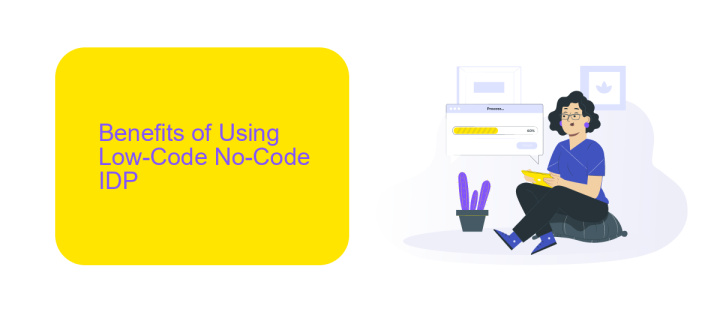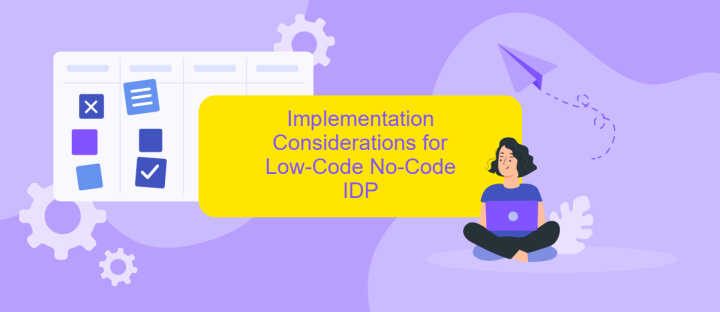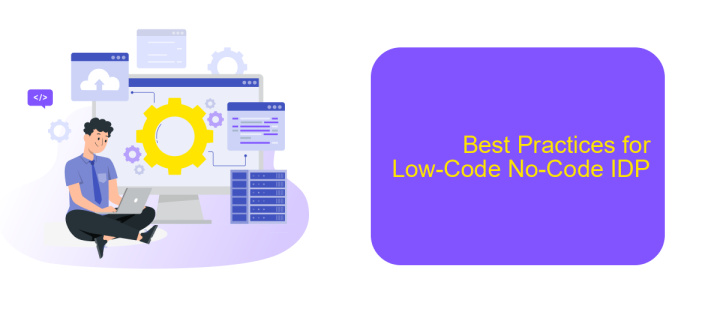Low-Code No-Code IDP
In today's fast-paced digital landscape, Low-Code No-Code Integrated Development Platforms (IDPs) are revolutionizing the way businesses approach software development. By enabling users with minimal coding knowledge to create robust applications, these platforms not only accelerate development cycles but also democratize innovation, making it accessible to a broader range of professionals across various industries.
Introduction to Low-Code No-Code IDP
Low-Code No-Code IDP (Intelligent Document Processing) is revolutionizing the way businesses handle and process documents. By leveraging these platforms, organizations can significantly reduce the need for extensive coding knowledge, enabling non-technical staff to automate document workflows efficiently. This approach not only accelerates digital transformation but also minimizes operational costs and errors.
- Facilitates rapid deployment of document processing solutions
- Empowers non-technical users to create and manage workflows
- Reduces dependency on IT departments
- Enhances accuracy and reduces manual errors
- Integrates seamlessly with existing systems and services
One of the key advantages of Low-Code No-Code IDP is its ability to integrate with various third-party services, such as ApiX-Drive. ApiX-Drive allows businesses to connect different applications and automate data transfers without any programming skills. This integration capability ensures that document processing workflows are not only efficient but also synchronized with other business processes, resulting in a more cohesive and streamlined operation.
Benefits of Using Low-Code No-Code IDP

Low-Code No-Code IDP platforms significantly reduce the time and resources required for application development. By providing intuitive drag-and-drop interfaces and pre-built templates, these platforms enable even non-technical users to create robust applications quickly. This democratization of development allows organizations to respond faster to market changes and customer needs, fostering innovation and agility.
Another major benefit is the seamless integration capabilities offered by services like ApiX-Drive. These platforms simplify the process of connecting various software applications, eliminating the need for complex coding. This ensures that data flows smoothly between systems, enhancing operational efficiency and reducing the risk of errors. As a result, businesses can focus more on strategic initiatives rather than getting bogged down by technical challenges.
Implementation Considerations for Low-Code No-Code IDP

When implementing a Low-Code No-Code IDP (Integrated Development Platform), several key considerations must be taken into account to ensure a successful deployment. Understanding these factors can help streamline processes and maximize the benefits of such platforms.
- Integration Capabilities: Ensure the platform can easily integrate with existing systems and third-party services. Tools like ApiX-Drive can facilitate seamless integration, reducing manual efforts.
- Scalability: Assess the platform's ability to scale with your organization's growth. It should support increasing workloads without compromising performance.
- Security: Evaluate the security features to protect sensitive data. The platform should comply with industry standards and offer robust security measures.
- User Training: Plan for adequate training sessions to help users effectively utilize the platform. A user-friendly interface can significantly reduce the learning curve.
- Customization: Check the extent to which the platform allows customization to meet specific business needs. Flexibility is crucial for addressing unique requirements.
Considering these factors can help organizations effectively implement Low-Code No-Code IDPs, ensuring that they leverage the full potential of these platforms while maintaining efficiency and security. Proper planning and execution are key to a successful implementation.
Best Practices for Low-Code No-Code IDP

Implementing best practices for Low-Code No-Code IDP (Integrated Development Platform) can significantly enhance efficiency and productivity. Firstly, always start with a clear understanding of your business requirements and objectives. This will help in selecting the right tools and features that align with your goals.
Secondly, ensure that you maintain a balance between customization and simplicity. While Low-Code No-Code platforms offer extensive customization options, overcomplicating the process can lead to inefficiencies. Focus on building scalable and maintainable solutions.
- Regularly update and maintain documentation for all processes.
- Leverage integration services like ApiX-Drive to streamline data flow between different applications.
- Conduct thorough testing to ensure the reliability and performance of your applications.
- Provide adequate training and support for users to maximize platform utilization.
Finally, continuously monitor and evaluate the performance of your Low-Code No-Code solutions. Use analytics to identify areas for improvement and make data-driven decisions. By following these best practices, you can optimize your Integrated Development Platform for better outcomes.


Future Trends and Innovations in Low-Code No-Code IDP
The future of Low-Code No-Code IDP is poised for significant advancements driven by AI and machine learning. These technologies will enable platforms to offer more intelligent automation and predictive analytics, making it easier for users to build sophisticated applications with minimal coding. Enhanced user interfaces and natural language processing will further simplify the development process, allowing even non-technical users to create complex workflows and applications effortlessly.
Integration capabilities will also see substantial improvements. Services like ApiX-Drive are at the forefront, offering seamless integration solutions that connect various applications and services without the need for extensive coding. This will facilitate smoother data flow and interoperability between different systems, enhancing productivity and operational efficiency. As these platforms evolve, we can expect more robust security features, scalability options, and industry-specific solutions tailored to meet the unique needs of various sectors.
FAQ
What is Low-Code No-Code IDP?
How can Low-Code No-Code IDP benefit my business?
What types of documents can be processed using Low-Code No-Code IDP?
Is it necessary to have technical skills to use Low-Code No-Code IDP platforms?
How can I integrate Low-Code No-Code IDP into my existing systems?
Apix-Drive is a simple and efficient system connector that will help you automate routine tasks and optimize business processes. You can save time and money, direct these resources to more important purposes. Test ApiX-Drive and make sure that this tool will relieve your employees and after 5 minutes of settings your business will start working faster.

